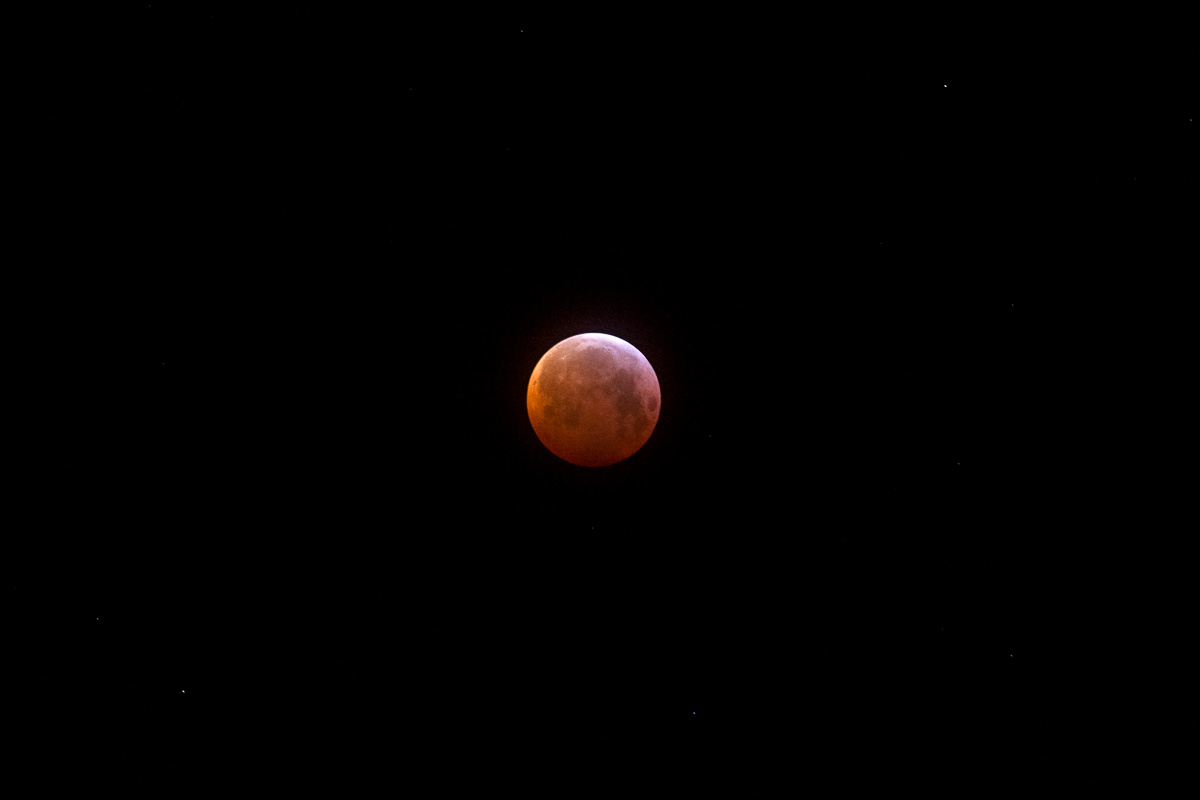The weather forecast for the early hours was far from encouraging, so I decided not to set an alarm and to leave things to chance. If I happened to be awake at around 05:00, and if the sky happened to be clear, I would get up and venture outside. Which is how I came to find myself standing behind my tripod on the front lawn at 05:15, photographing the lunar eclipse.

As my mate Thony, an expert on the history of astronomy, tweeted a few hours later, ‘If you’ve seen one lunar eclipse, you’ve seen em all.’ My photos did indeed look remarkably similar to the ones I’d taken of previous lunar eclipses. But it’s always a thrill to see predictive science come up trumps yet again: here was the promised eclipse, bang on cue, just to the left of Gemini.
But this wasn’t any boring old lunar eclipse, you understand. As the media were falling over themselves to point out, this was a ‘super blood wolf moon’. ‘Super’ because the moon was closer to the earth than usual, making it almost imperceptibly larger and brighter. ‘Blood’ because, as with all full lunar eclipses, the moon turned red. And ‘wolf’ because it was the first full moon in January, when wolf courtship howls are supposedly at their peak. To maintain our interest, it seems to be an unwritten rule that every lunar eclipse has to have one more adjective than the last.
The rosy lunar glow is caused by sunlight refracting through the earth’s atmosphere and bouncing back at us off the face of the moon. Reflected sunrises and sunsets from around the world: a truly international collaboration. It’s not the colour I marvel at, but the way in which the moon is sculpted by the subdued light, revealing its true three-dimensional nature. On all other nights, the moon looks like a flat disc, with varying amounts bitten away. When the moon is in full eclipse, it is very clearly a solid sphere, hanging up there in the blackness, as if by magic.
I tried to contain my disappointment at not hearing any wolves serenading in the valley below. But I was delighted to hear the persistent ke-wick of a female tawny owl a short distance away, down near the Manor House. After a few minutes, her cries were answered by the more distant hoo-hoo-ooo of a male off towards Nutclough Wood.
As I lowered my gaze from the moon to admire the mist rising from the valley, a shooting star streaked towards Heptonstall. The icing on the cake. Elated, I began to dismantle my camera kit. Lunar eclipses were all well and good, but I was bloody freezing.
Leave a Reply